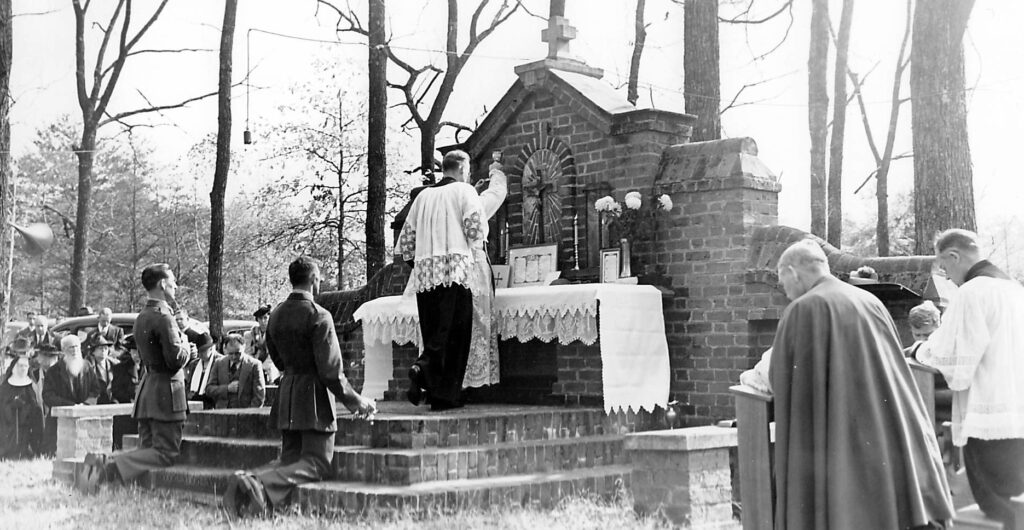MARGARET BRENT
At a time when women had few rights in colonial America and it was illegal to be a Catholic in Virginia, Margaret Brent (ca. 1601–1671) was active in civic affairs and a steadfast adherent of her faith. The story of her courage, determination and astuteness, which contributed to the cause of women’s rights, is fittingly told during March — Women’s History Month.
Margaret Brent was born in England during a harrowing time for Catholics. Queen Elizabeth I had reestablished Protestantism and enacted penalties against Catholics (1559). Nevertheless, most of the Brent family became Catholic during the 1620s, a decision that made them recusants, meaning that they “refused” (Latin: recusare) to attend Anglican worship services and were therefore fined.
This religious persecution probably led four Brent siblings, including Margaret, to immigrate to Maryland (1638). Margaret’s brother Giles had been appointed treasurer of the new English colony founded on the principle of religious toleration (1632–1634). (Three Brent sisters remained in Europe and entered a recusant convent in France.)
In Maryland, Margaret remained single, a decision that enabled her to become a successful businesswoman. Together with her sister Mary, with whom she operated a plantation, Margaret cultivated tobacco, owned a mill, engaged in lending and imported indentured servants. (These laborers typically worked for several years in order to pay the debt of their passage to the colony.) Margaret also functioned as a lawyer.
She played a significant role in the aftermath of the Plundering Time, a period of unrest during which Protestants toppled the Catholic governor of Maryland, Leonard Calvert, and both sides engaged in violence (1645–1647). Calvert eventually regained power, and before his unexpected death, he appointed Margaret Brent the executor of his estate.
Margaret was now responsible for paying the mercenaries from Virginia who had restored Calvert to power. As time went on, they seemed to be on the verge of mutiny. She appeared before the Maryland General Assembly, which met to address the crisis.
Margaret sought to cast two votes on the matter: one for herself, as a landowner, and the other as the attorney of Leonard Calvert’s older brother Cecil (Lord Baltimore), who was Maryland’s proprietor and living in England (1648). This event has been viewed as an antecedent of women’s suffrage, although she herself did not advocate for that cause.
The governor denied her request to vote. Needing to act, Margaret sold Lord Baltimore’s livestock — without his permission — and paid the mercenaries. Baltimore was incensed by the move, but the legislature defended her decision as having preserved peace in Maryland.
In a letter to Baltimore, the lawmakers wrote that Margaret successfully restrained the soldiers because of her status as a woman and because of her diplomatic skills (1649). Her actions may well have saved the fledgling colony of Maryland from extinction.
Margaret moved to Virginia after her brother Giles had disagreements with Lord Baltimore (ca. 1650). The family settled along Aquia Creek in the Northern Neck in what became Stafford County. The Brents are the first Catholic family known to have made Virginia their place of residence.
The Brents were recusants in their new home, but Virginia’s laws against Catholics were applied inconsistently, and the Brents, probably because they lived in a rural area and were circumspect about their religion, were able to progress socially and professionally for over a century. Margaret ran a plantation and continued to be involved in business and legal matters, although not politics.
The location of her grave is unknown. However, she is honored at the Brent Family Cemetery in Stafford, which belonged to the estate of her nephew George. The graveyard is located next to St. William of York Catholic Church (Diocese of Arlington). An annual field Mass has been celebrated at the cemetery since 1929 in memory of the Brent family.
On January 11, 1926, six years after women in the United States were granted the right to vote, the Catholic Woman’s Club of Richmond installed a plaque at its meeting place to commemorate Margaret and her contribution to women’s suffrage. “The Virginia Knight,” predecessor publication to “The Catholic Virginian,” covered the event in its January 1926 issue:
“Miss Adele Clark, second vice-president of the National League of Women Voters, was present at the ceremony and was called upon to speak. She commended the work of the club and their interest in civic and political affairs. She spoke of Bishop [Denis J.] O’Connell [sixth bishop of Richmond] as one who has always interested himself in the progress of his State and country, and voiced her appreciation of the fact that it was he who drew attention to Margaret Brent and caused it to be known that, though Virginia was not the first colony to bid her welcome in the New World, yet it did afford her a last resting place. … Miss Clark expressed her pleasure in being present at this impressive ceremony in honor of one whose name is held in such high esteem among the women voters of America.”

